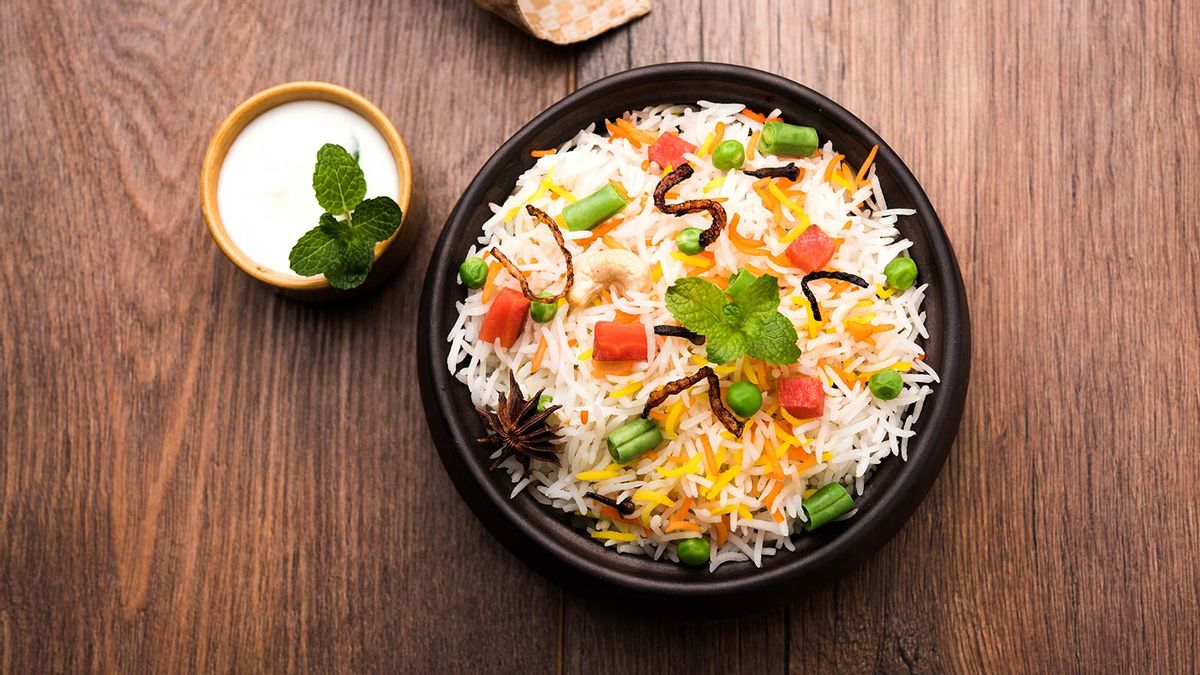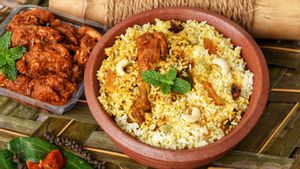While rice dishes such as the biryani and pulao, have been feeding the country’s appetite for rice-with-spice since ages, the two cannot be used interchangeably. Both may look similar and even taste similar on occasions, the fact remains that pulao and biryani are poles apart.
Right from their origin to the cooking methods involved, and here’s why you shouldn’t confuse the two:
History
Also known as pilaf or pilau, Pulao is a simple one-pot meal with a mysterious past. Opinions differ about its origin. Some studies indicate that pulao is of Persian origin, while there are others suggest that the pilaf might have originated in ancient India only to travel to South Asia and the Middle East to become an integral part of the local cuisines. Adding credibility to this argument is food historian K.T. Achaya who in his book Indian Food – A Historical Companion mentioned that the Sanskrit word ‘pulla’ or ‘pulaka’, which translates to rice and meat, is the progenitor of the word ‘pulao’.
Similarly, there are various legends associated with the evolution of Biryani. On one end, there is the Persian origin story where the name is derived from the Persian word ‘birian’, which means ‘fried before cooking’, informs Chef Amitesh Singh Virdi, Punjab Grill, Mumbai. There are also studies that state biryani might’ve been introduced in north India by Mughals and in the south, where rice is a staple, by Arab traders.
Not just that, Chef Singh Virdi adds, “Theories also suggest that the Turk-Mongol conqueror, Taimur, brought biryani to the subcontinent during his invasion.” Yet another tale credits Mumtaz Mahal, the wife of Shah Jahan, for biryani. “She was taken aback when she saw undernourished Mughal soldiers and thereby ordered the chefs to prepare a wholesome dish with meat and rice. The said dish was spiked with spices and saffron, and then cooked over an open fire,” says Singh Virdi. In the south, Tamil scriptures suggest that biryani was a popular medieval warrior food.
Long story short, the origin story debate about where both the pulao and biryani might’ve originated continues. However, the fact is that today, there are different types of biryanis and pulaos made across the Indian subcontinent, and also in other parts of the world.
Cooking method

When you’re short on time and craving comfort food, Pulao will never disappoint. Following a fairly simple cooking method called absorption wherein the meat or veggies are seared first, then the rice gets added and finally, everything’s cooked together in a pre-determined quantity of water, either in a sealed handi or pressure cooker. Whatever the type—peas pulao, sweet Bengali pulao, shahi pulao, fish pulao, chicken pulao, paneer pulao or basic vegetable pulao—the pulao is always cooked on a medium flame.
“Unlike pulao, biryani is a rich rice dish which needs to be cooked on a very slow flame in a sealed container (known as Dum Pukht). This helps in sealing the flavours and aromas of the ingredients, allowing it to be absorbed by the rice and meat/veggies,” explains Kamlesh Nair, Food and Beverage Manager, Indore Marriott Hotel. Based on the style and marination, biryani can be cooked two ways, but biryani won’t be complete without the layering of rice and meat.
“When the meat and rice are partially cooked separately, then arranged in layers, sealed and cooked on ‘dum’ over a slow flame, it’s called Pakki Biryani. This is a much simpler version and easy to replicate at home. Alternately, the rice and meat/veggies can also be cooked together in the same pot and is known as Kacchi Biryani,” explains Nair.
Spices and seasoning
Pulao, in general, can be cooked using different methods, techniques and even spices depending on the region or one’s taste and preference. “These little things play an important role in the making of various pulao as each type has a different representation,” says Nair. While the star ingredient –rice–remains the same, most pulao recipes call for the use of minimum spices that can be added whole, without grinding. Bay leaf, clove, and cardamom are commonly used, informs Nair. Some pulao recipes suggest the use of stock water or coconut milk instead of plain water, to enhance the taste. Nair suggests, “Before serving your pulao, you can garnish it with fried onions, saffron strands, etc.”
The secret to any good Biryani lies in the detail–the spices help your biryani impart either a strong or subtle flavour. Biryanis are always known to have a more complex and stronger flavour profile compared to pulao. While the ingredients may vary from region to region, depending on the local produce, typically ghee, nutmeg (jaiphal), pepper, cloves, cardamom, cinnamon, bay leaves, coriander, mint leaves, ginger, onions, tomatoes, and garlic find their way into most biryani recipes, explains Nair. In addition to these ingredients, biryanis are often finished with rose petals, rose essence and screwpine or kewra water.
Rice
Humble Pulao is a no-fuss dish and can be made using any rice–from short, mid-sized to long-grain. While long-grained basmati is the favourite rice used for Biryani.
However, depending on the geography, different varieties of rice are used. Traditionally, north India preferred long-grain brown rice. On the other hand, the south makes its biryanis using local varieties of rice, such as Jeerakashala, Zeera Samba, Kaima and Kala Bhaat, that help lend the biryanis a distinct taste and texture in comparison to their northern counterparts.
Accompaniments
Though Pulao can be had as a complete meal in itself served piping hot or at room temperature, some pickle, raita or salad of one’s choice, by the side doesn’t hurt. Pulao is often dry and is accompanied by a sabzi or curry/gravy.
Biryani too doesn’t require accompaniments. However, the Hyderabadi Biryani in particular, is served with dahi chutney (yoghurt, mint, and onion), mirchi ka salan (green chili curry) or baghara baingan (roasted eggplant). Other biryanis are had with a salad or raita usually made with onions, carrots, cucumbers and tomatoes.





